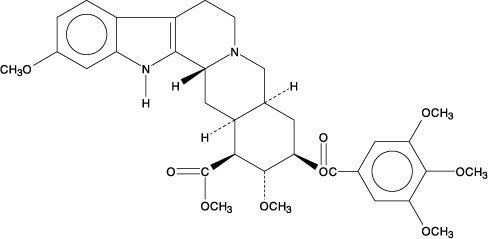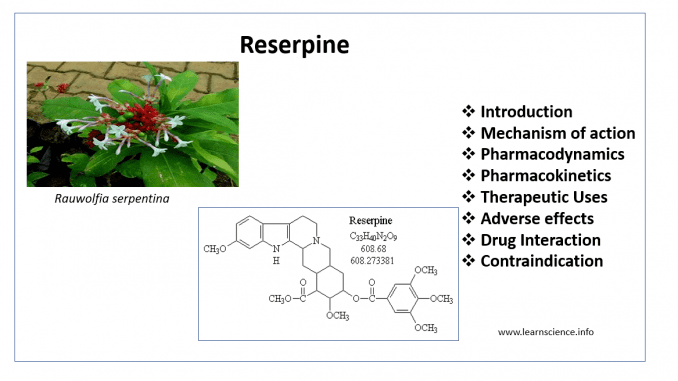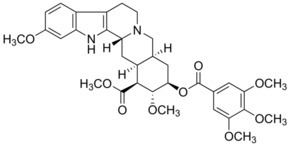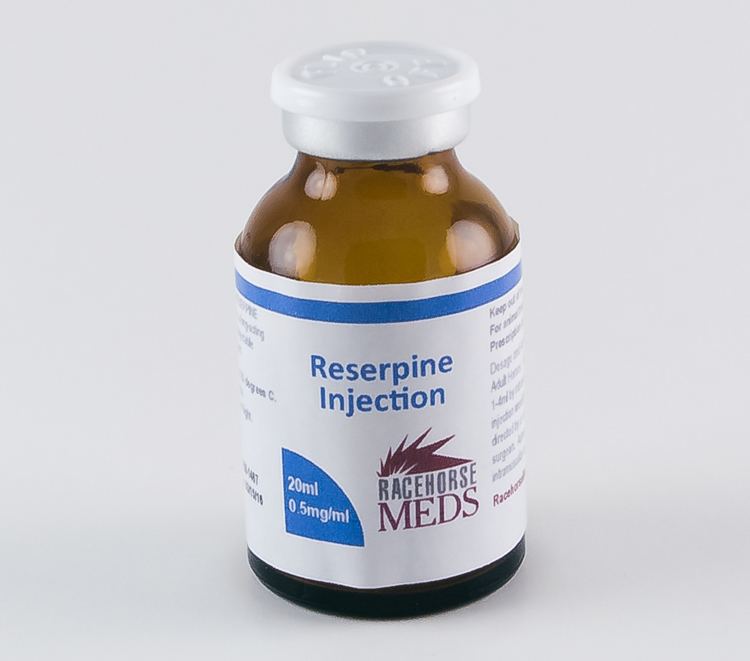MedlinePlus a601107 Pregnancycategory C Molar mass 608.68 g/mol | License data US FDA: Reserpine Routes ofadministration Oral CAS ID 50-55-5 Bioavailability 50% | |
 | ||
AHFS/Drugs.com Consumer Drug Information | ||
Huntington s drugs tetrabenazine reserpine haloperidol
Reserpine (also known by trade names Raudixin, Serpalan, Serpasil) is an indole alkaloid, antipsychotic, and antihypertensive drug that has been used for the control of high blood pressure and for the relief of psychotic symptoms, although because of the development of better drugs for these purposes and because of its numerous side-effects, it is rarely used today. The antihypertensive actions of reserpine are a result of its ability to deplete catecholamines (among other monoamine neurotransmitters) from peripheral sympathetic nerve endings. These substances are normally involved in controlling heart rate, force of cardiac contraction and peripheral vascular resistance.
Contents
- Huntington s drugs tetrabenazine reserpine haloperidol
- Reserpine meaning
- Mechanism of action
- Biosynthetic pathway
- History
- Medical
- Veterinary and other
- Side effects
- References

Reserpine-mediated depletion of monoamine neurotransmitters in the synapses is often cited as evidence to the theory that depletion of the monoamine neurotransmitters causes subsequent depression in humans (c.f. monoamine hypothesis). However, this claim is not without controversy. The reserpine-induced depression is considered by some researchers to be a myth, while others claim that teas made out of the plant roots containing reserpine have a calming, sedative action that can actually be considered antidepressant. Notably, reserpine was the first compound shown to be an effective antidepressant in a randomized placebo-controlled trial.

Moreover, reserpine has a peripheral action in many parts of the body, resulting in a preponderance of the effects of the cholinergic part of the autonomous nervous system on the GI tract, smooth muscles, blood vessels, etc.

Reserpine meaning
Mechanism of action
Reserpine irreversibly blocks the vesicular monoamine transporter (VMAT). This normally transports free intracellular norepinephrine, serotonin, and dopamine in the presynaptic nerve terminal into presynaptic vesicles for subsequent release into the synaptic cleft ("exocytosis"). Unprotected neurotransmitters are metabolized by MAO (as well as by COMT) in the cytoplasm and consequently never excite the post-synaptic cell.
It may take the body days to weeks to replenish the depleted VMAT, so reserpine's effects are long-lasting.
This depletion of dopamine can lead to drug-induced parkinsonism.
Biosynthetic pathway

Tryptophan is the starting material in the biosynthetic pathway of reserpine, and is converted to tryptamine by tryptophan decarboxylase enzyme. Tryptamine is combined with secologanin in the presence of strictosidine synthetase enzyme and yields strictosidine. Various enzymatic conversion reactions lead to the synthesis of reserpine from strictosidine.
History

Reserpine was isolated in 1952 from the dried root of Rauwolfia serpentina (Indian snakeroot), which had been known as Sarpagandha and had been used for centuries in India for the treatment of insanity, as well as fever and snakebites — Mahatma Gandhi used it as a tranquilizer. It was first used in the United States by Robert Wallace Wilkins in 1950. Its molecular structure was elucidated in 1953 and natural configuration published in 1955. It was introduced in 1954, two years after chlorpromazine. The first total synthesis was accomplished by R. B. Woodward in 1958.

Reserpine almost irreversibly blocks the uptake (and storage) of norepinephrine (i.e. noradrenaline) and dopamine into synaptic vesicles by inhibiting the vesicular monoamine transporters (VMAT).#
Reserpine has been discontinued in the UK for some years due to its numerous interactions and side effects.
Reserpine was also highly influential in promoting the thought of a biogenic amine hypothesis of depression — see Everett & Tolman, 1959.
Medical
Reserpine is one of the few antihypertensive medications that have been shown in randomized controlled trials to reduce mortality: The Hypertension Detection and Follow-up Program, the Veterans Administration Cooperative Study Group in Anti-hypertensive Agents, and the Systolic Hypertension in the Elderly Program.
Reserpine is rarely used in the management of hypertension today. Reserpine is listed as an option by the JNC 7. Reserpine is a second-line adjunct agent for patients who are uncontrolled on a diuretic when cost is an issue.
It is also used to treat symptoms of dyskinesia in patients suffering from Huntington's disease.
In some countries reserpine is still available as part of combination drugs for the treatment of hypertension, in most cases they contain also a diuretic and/or a vasodilator like hydralazine. These combinations are currently regarded as second choice drugs. The daily dose of reserpine in antihypertensive treatment is as low as 0.1 to 0.25 mg. The use of reserpine as an antipsychotic drug had been nearly completely abandoned, but more recently it made a comeback as adjunctive treatment, in combination with other antipsychotics, so that more refractory patients get dopamine blockade from the other antipsychotic, and dopamine depletion from reserpine. Doses for this kind of adjunctive goal can be kept low, resulting in better tolerability. Originally, doses of 0.5 mg to 40 mg daily were used to treat psychotic diseases. Doses in excess of 3 mg daily often required use of an anticholinergic drug to combat excessive cholinergic activity in many parts of the body as well as parkinsonism. For adjunctive treatment, doses are typically kept at or below 0.25 mg twice a day.
Veterinary and other
Reserpine may be used as a sedative for horses.
Another frequent use of reserpine is in the field of mass spectrometry where it is widely used as a reference standard owing to its availability, ease of ionization under electrospray conditions and stability in solution.
Reserpine is used as a long-acting tranquilizer to subdue excitable or difficult horses and has been used illicitly for the sedation of show horses, for-sale horses, and in other circumstances where a "quieter" horse might be desired.
Reserpine is no longer available in the United Kingdom however it is still available in the United States
Side effects
At doses of less than 0.2 mg/day, reserpine has few side effects, the most common of which is nasal congestion.
There has been much concern about reserpine causing depression leading to suicide. However, this was reported in uncontrolled studies using doses averaging 0.5 mg per day.
Reserpine can cause: nasal congestion, nausea, vomiting, weight gain, gastric intolerance, gastric ulceration (due to increased cholinergic activity in gastric tissue and impaired mucosal quality), stomach cramps and diarrhea are noted. The drug causes hypotension and bradycardia and may worsen asthma. Congested nose and erectile dysfunction are other consequences of alpha-blockade. Depression can occur at any dose and may be severe enough to lead to suicide. Other central effects are a high incidence of drowsiness, dizziness, and nightmares. Parkinsonism occurs in a dose dependent manner. General weakness or fatigue is quite often encountered. High dose studies in rodents found reserpine to cause fibroadenoma of the breast and malignant tumors of the seminal vesicles among others. Early suggestions that reserpine causes breast cancer in women (risk approximately doubled) were not confirmed. It may also cause hyperprolactinemia.
Reserpine passes into breast milk and is harmful to breast-fed infants, and should therefore be avoided during breastfeeding if possible.
It also produces a dangerous decline in blood pressure at doses needed for treatment.
